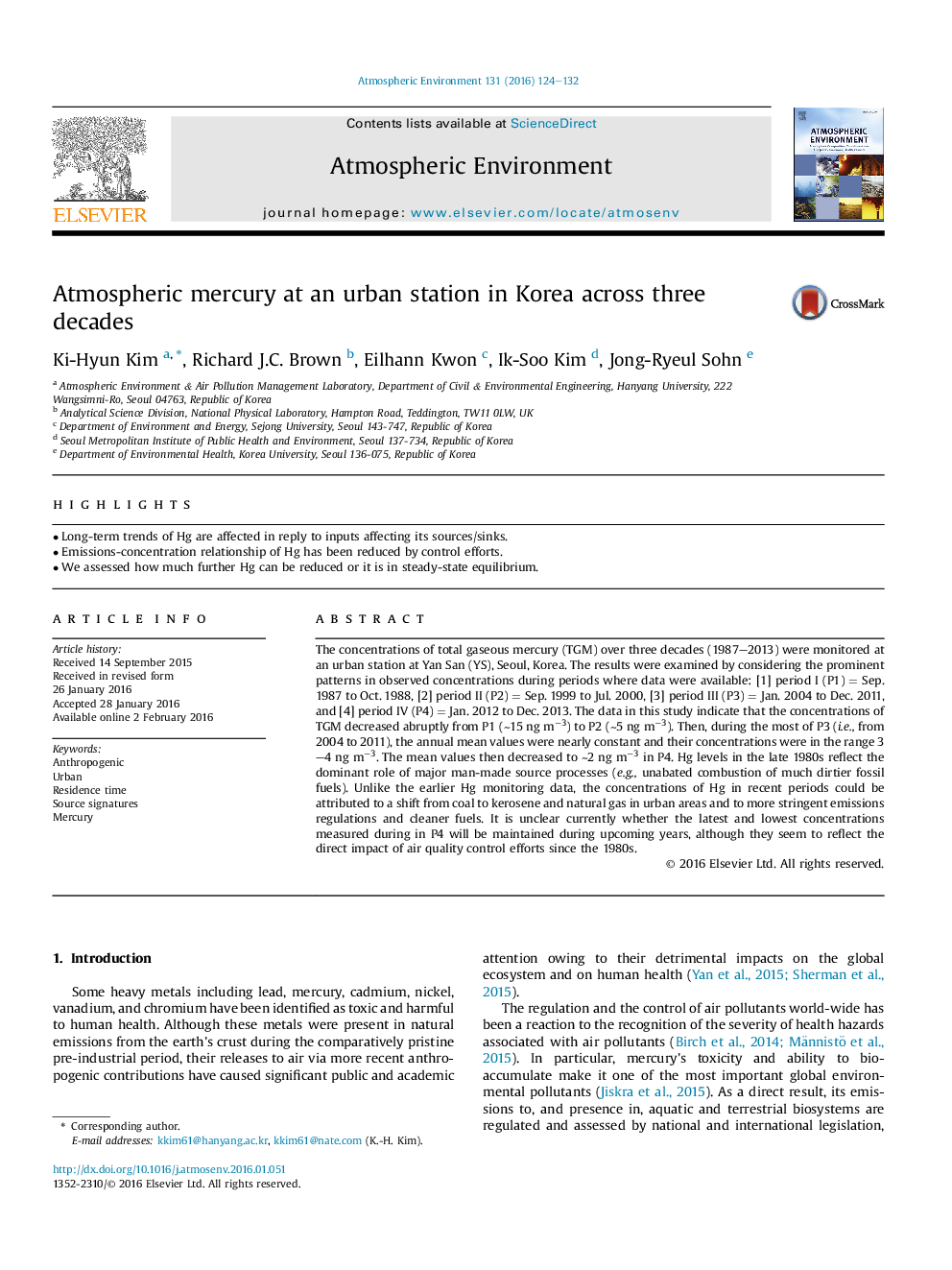| Article ID | Journal | Published Year | Pages | File Type |
|---|---|---|---|---|
| 6336438 | Atmospheric Environment | 2016 | 9 Pages |
Abstract
The concentrations of total gaseous mercury (TGM) over three decades (1987-2013) were monitored at an urban station at Yan San (YS), Seoul, Korea. The results were examined by considering the prominent patterns in observed concentrations during periods where data were available: [1] period I (P1) = Sep. 1987 to Oct. 1988, [2] period II (P2) = Sep. 1999 to Jul. 2000, [3] period III (P3) = Jan. 2004 to Dec. 2011, and [4] period IV (P4) = Jan. 2012 to Dec. 2013. The data in this study indicate that the concentrations of TGM decreased abruptly from P1 (â¼15 ng mâ3) to P2 (â¼5 ng mâ3). Then, during the most of P3 (i.e., from 2004 to 2011), the annual mean values were nearly constant and their concentrations were in the range 3-4 ng mâ3. The mean values then decreased to â¼2 ng mâ3 in P4. Hg levels in the late 1980s reflect the dominant role of major man-made source processes (e.g., unabated combustion of much dirtier fossil fuels). Unlike the earlier Hg monitoring data, the concentrations of Hg in recent periods could be attributed to a shift from coal to kerosene and natural gas in urban areas and to more stringent emissions regulations and cleaner fuels. It is unclear currently whether the latest and lowest concentrations measured during in P4 will be maintained during upcoming years, although they seem to reflect the direct impact of air quality control efforts since the 1980s.
Related Topics
Physical Sciences and Engineering
Earth and Planetary Sciences
Atmospheric Science
Authors
Ki-Hyun Kim, Richard J.C. Brown, Eilhann Kwon, Ik-Soo Kim, Jong-Ryeul Sohn,
